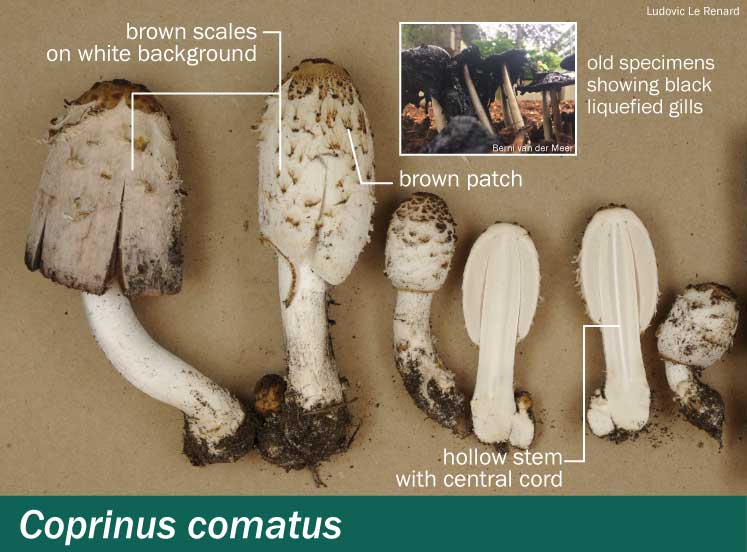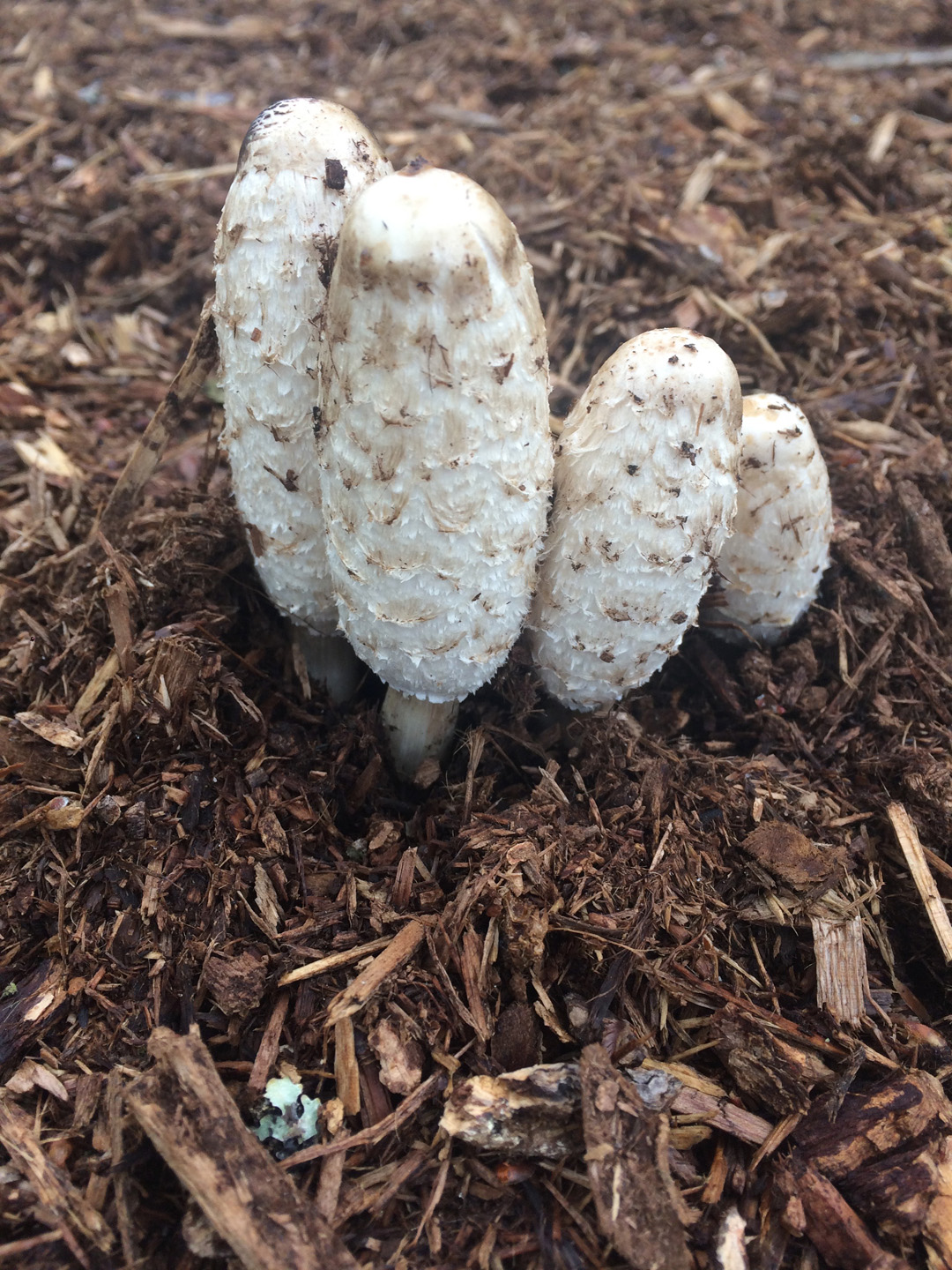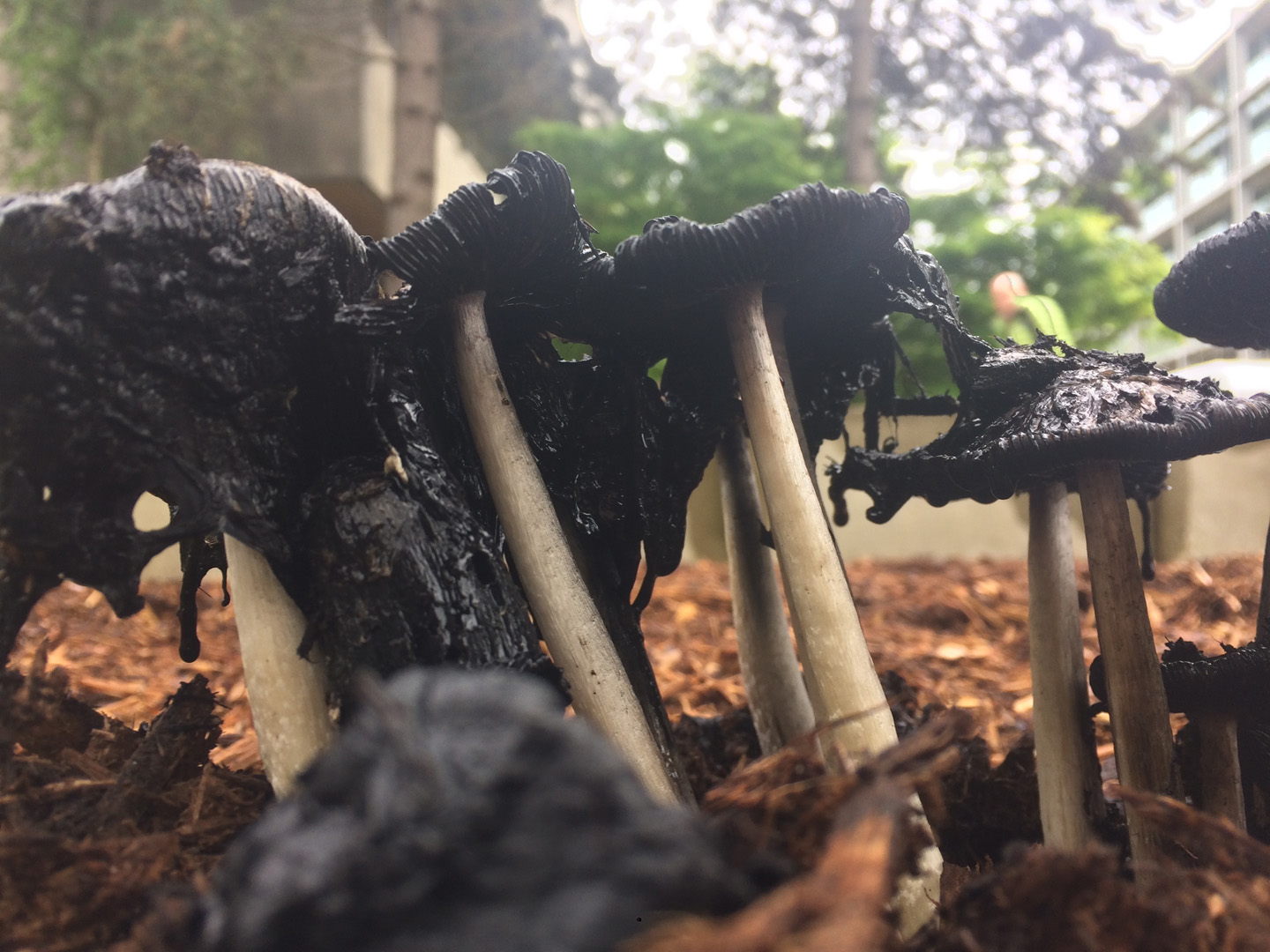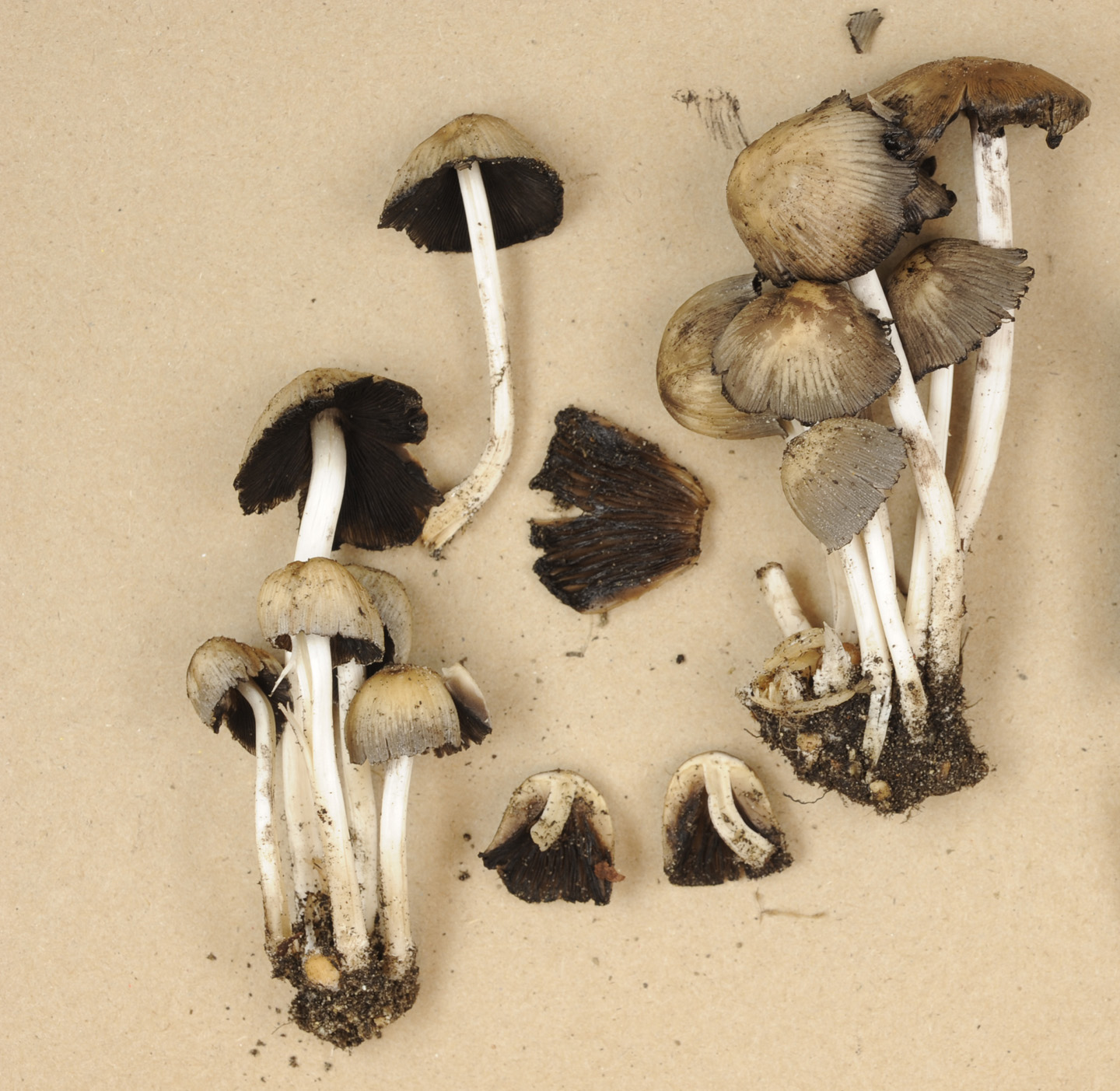Coprinus comatus — Shaggy mane
Left image: Shaggy manes fresh and young15, photograph by Berni van der Meer.
Right image: Shaggy manes liquefy overnight into oozing black slime, photograph by Berni van der Meer.
Odour: Spicy mushroom-like.
Cap: 2.5–7 cm in diameter and 5–20 cm tall; cylindrical with a rounded top when young, expanding when mature to flat, its margin rolling upwards to reveal liquefying, inky black gills. Cap surface white with light brown, flat scales and a solid light brown patch on the centre top. The background becomes increasingly fibrillose as the cap matures.
Gills: Very crowded, almost touching the stem. The white gill edge forms a thick protective band in the closed cap. Gill colour is initially white to cream, then changes from the cap margin inwards. First a pink blush shows, then the maturing spores colour the gills black. The gills begin to self-destruct into a black ink containing the spores.
Stem: 10–25 cm long x 1–2 cm wide, cylindrical but widened at the utmost base. The colour is white to cream, with fibres on the surface. The stem is hollow with a white cord inside that stretches from the top to the base.
Ring: A small movable ring on the stem, after the cap has expanded.
Cup: None.
Spores: 10–14 x 5.5–7.5 µm, black with a dull surface and a germ pore.
Habitat: In groups and clusters in lawns and pastures, gardens, cemeteries, along forest roads, and in other disturbed areas.
Geographical distribution: Throughout BC and the Pacific northwest, also in Alaska except for the far north. Worldwide.
Because they absorb heavy metals, shaggy manes have potential uses in bioremediation of contaminated soils9,10. However, their ability to accumulate mercury and other toxic heavy metals also means that mushrooms growing from disturbed and contaminated soil should not be eaten10.
Shaggy manes form small spiny structures in the soil, which can tear through the skin of nematodes. They also seem to have anti-nematode toxins14.
Treatment: Contact your regional Poison Control Centre if you or someone you know is ill after eating shaggy manes. Poison centres provide free, expert medical advice 24 hours a day, seven days a week. If possible, save the mushrooms or some of the leftover food containing the mushrooms to help confirm identification.
Poison Control:
British Columbia: 604-682-5050 or 1-800-567-8911.
United States (WA, OR, ID): 1-800-222-1222.




